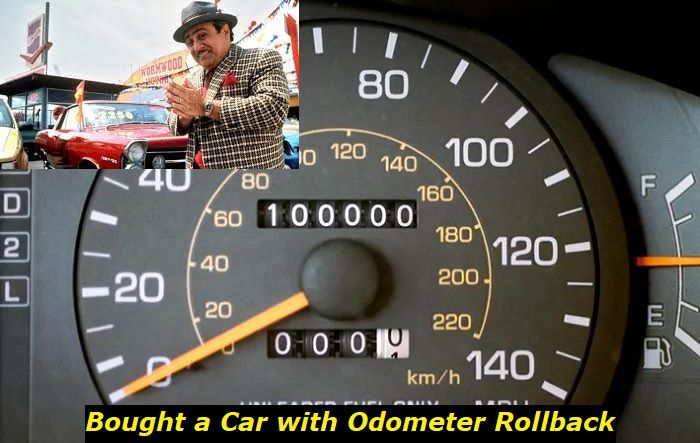Just as you step onto the gas pedal of your VW model, you notice that there's no acceleration. While infuriating, this is a sign that there's something wrong with the throttle body sensor of your car.
Car software problems highlights
- Howcommon:very common
- Main reasons:glitch, voltage problems, hardware issues, wrong settings
- DIY diagnosis:complicated
- DIYrepair:sometimes possible
- Solutions:resetting, changing settings,re-pairingdevices
- Can you drive?yes
- Price in dealership:$150 - $400
.jpg)
What Are the Symptoms of a Faulty Throttle Body?
Despite how simple the role of a TPS is, once it starts going bad, it will show a variety of symptoms. And that's usually the time when you need to do a full throttle body reset, or else you risk lowering the performance of your car. And this section will tell you all about the common symptoms that a faulty throttle body will show.
1) Power Loss
The most common symptom that you'll immediately pick up is your car's lack of power. Since the role of the TPS is to maintain the correct amount of fuel and air intake, a fault in the ratio will cause your car to suddenly die down. If not, you will notice a considerable amount of power loss.
Dimming of headlights, loss of radio, and the slowing down of your car are just some of the ways that power loss will show itself to you. But before you can fully determine that the TPS is really at fault, first check if your car battery is working fine and if you have enough fuel in the car's tank.
2) Acceleration Issues
As mentioned earlier, the TPS is responsible for controlling the intake of air and fuel into the car's engine. And if the engine doesn't get the right amount, there will be a lack of power. And with the power loss, you won't be able to accelerate your car.
Instead, you'll experience intermittent acceleration or none at all. No matter how hard or how many times you step on the gas pedal, your car won't likely accelerate the way you want it to.
3) Poor Mileage
If the throttle body is not working correctly, then you're highly likely to consume more fuel when driving without achieving the correct amount of mileage that's typical of your car model. Instead, you'll probably end up refueling the tank more often while getting less mileage on the road with your car.
One way to test this is by refueling the gas tank back up to full. Then, reset one of the odometers or take note of how many miles your car will end up covering. From there, you can look up online the average amount of fuel and distance that your car model usually takes at a certain speed to determine if your car is suffering from a faulty throttle body.
4) Rough Idling
One of the more common symptoms of a faulty throttle body is rough idling. If you notice that your car's engine often jerks or stalls out whenever you idle, it's a clear sign that the TPS is having a rough time maintaining a steady flow of power to keep your car's engine running.
5) Dirt/Grime Accumulation
If you're still unsure that your car is suffering from a faulty throttle body, then one way to check is to inspect the part in question. What you do is check the inside of the throttle body for any layer of dirt or grime.
A buildup of any of the two will cause fluctuations in how the sensor will take in air and fuel into the car's engine. This will then lower the effectiveness of your car's engine and will also cause the other symptoms in this section.
6) Electrical Problems
With how developed the modern car has become, it's inevitable that there will be electrical issues. So if your car's TPS is not working correctly, the other sensors and internal systems within your car will try to correct the problem. However, this usually ends up with the car entering a reduced power mode or a hibernation mode in some car models.
For those that don't have this feature, your car's functions and speed will be severely limited. In this situation, it will be difficult for you to drive around in your car.
How To Do A VW Throttle Body Reset?
Now that you know what symptoms to look out for, it's time for you to learn how to do a VW throttle body reset. There are several ways that you can go about it, and in this section, you will learn some of the most common ways to resolve the issue.
1) Use An OBD2 Scanner
The easiest way to do a full-body throttle reset is by using a diagnostic scanner. Especially with modern cars, the best way to fix the problem is by recalibrating the system.
To do this, however, you need to buy a sensor that's compatible with your current car model. In this case, you will need to get a diagnostic scanner that works on VW car models.
Another thing to take note of is that not every car model can use this method to reset the throttle body. Instead, you will have to do it manually.
2) Disconnect The Battery
If you don't plan on buying a diagnostics scanner or your car doesn't support such a device, then one way to reset the throttle body is by cutting off the power to your car. In this case, you will need to disconnect the car battery.
Wait for at least five minutes before reconnecting the battery. During that short amount of time, the car's electrical systems will return to their original preset settings. Because of how simple it is to do, many prefer to reset the throttle body in this manner.
3) Hold Down The Accelerator
Another way to easily reset the throttle body is by stepping on the accelerator pedal for a good twenty seconds. Before you do this, however, make sure to turn on the vehicle without the engine running. Just leave the key in the ON position when you do this.
For those whose car models don't require the use of keys, simply press the start button once so that the engine won't start up. Afterward, hold down the accelerator pedal as close to the maximum as possible.
From there, you slowly ease off the accelerator pedal and then turn the engine off. Next, start the engine and drive normally to check if the condition has improved.
4) Remove The Fuse
Another way to do a full-body throttle reset is by removing the fuse. This works the same way with the battery. Without the fuse, your car's electrical systems will go back to how they were originally.
To do this, you need to look up how to remove the fuse in your car using its respective manual. If you can no longer find it, there are plenty of videos and instructional guides online that will tell you how to do it correctly.
5) Drive The Vehicle
If you're on the road and notice that your car's performance is dropping, you can reset the TPS by driving at speeds over 40 mph on empty highways.
Then, you slowly decelerate and accelerate your car for a few minutes between each session. The sensor can be reset in this manner, so make sure to check the responsiveness of your vehicle while driving.
6) Idle The Engine
Another method that you can try is to let the engine idle for at least three minutes. This will allow your car's electrical system to make the necessary adjustments.
Then, turn your car off and start it up once more to check if the situation has improved. If none of these methods work, you will need to bring your car to an auto shop and have a professional take a look.
Conclusion
So if your car starts running out of steam or losing acceleration, then do a full-body throttle reset. Remember, though, to check the TPS for any grime and damages before proceeding to do a reset. Or else, the issue will persist.
Anyone can do a throttle body reset at home, provided that they follow the necessary instructions in doing so. If you don't feel comfortable trying to reset the throttle body or none of them seems to work, bring your car to a professional.
About the authors
The CarAraC research team is composed of seasoned auto mechanics and automotive industry professionals, including individuals with advanced degrees and certifications in their field. Our team members boast prestigious credentials, reflecting their extensive knowledge and skills. These qualifications include: IMI: Institute of the Motor Industry, ASE-Certified Master Automobile Technicians; Coventry University, Graduate of MA in Automotive Journalism; Politecnico di Torino, Italy, MS Automotive Engineering; Ss. Cyril and Methodius University in Skopje, Mechanical University in Skopje; TOC Automotive College; DHA Suffa University, Department of Mechanical Engineering






Add comment